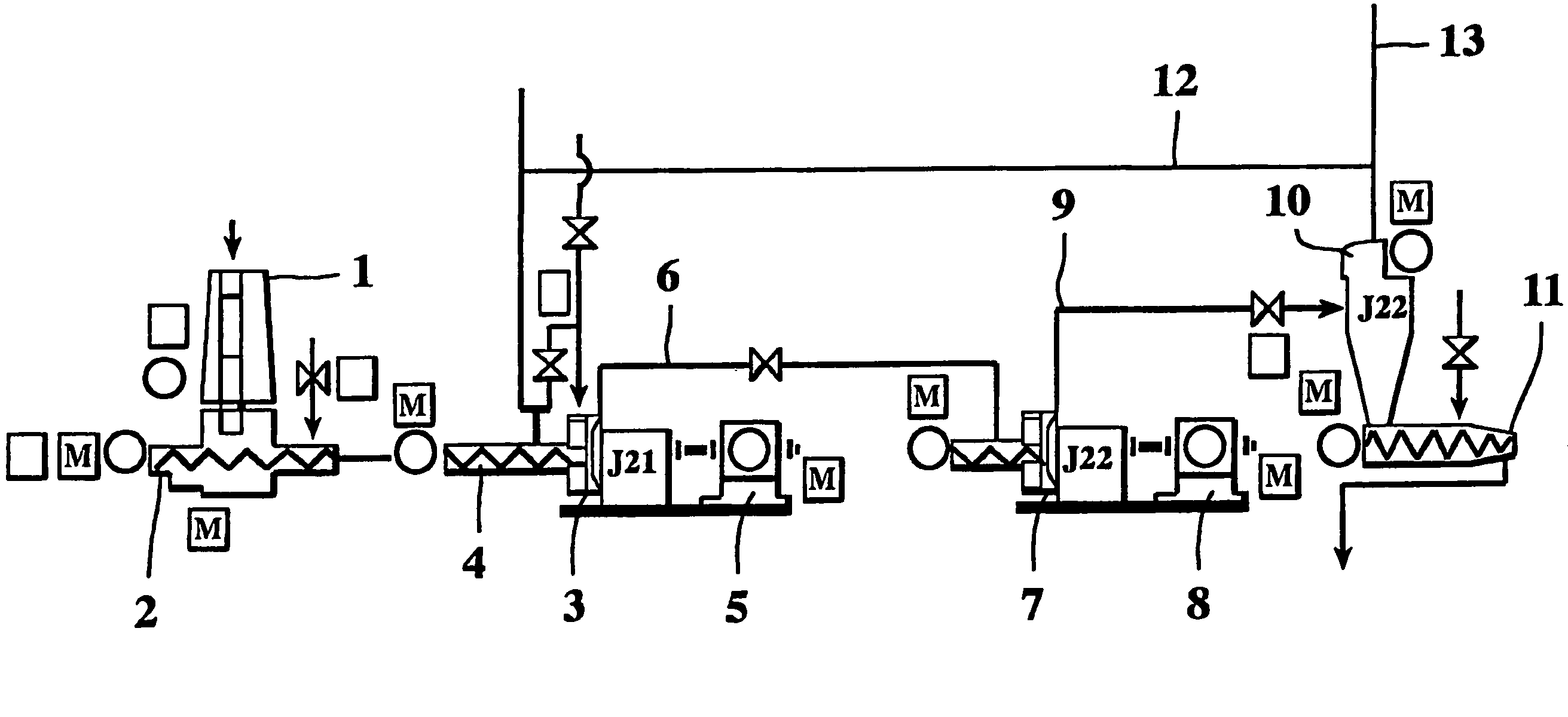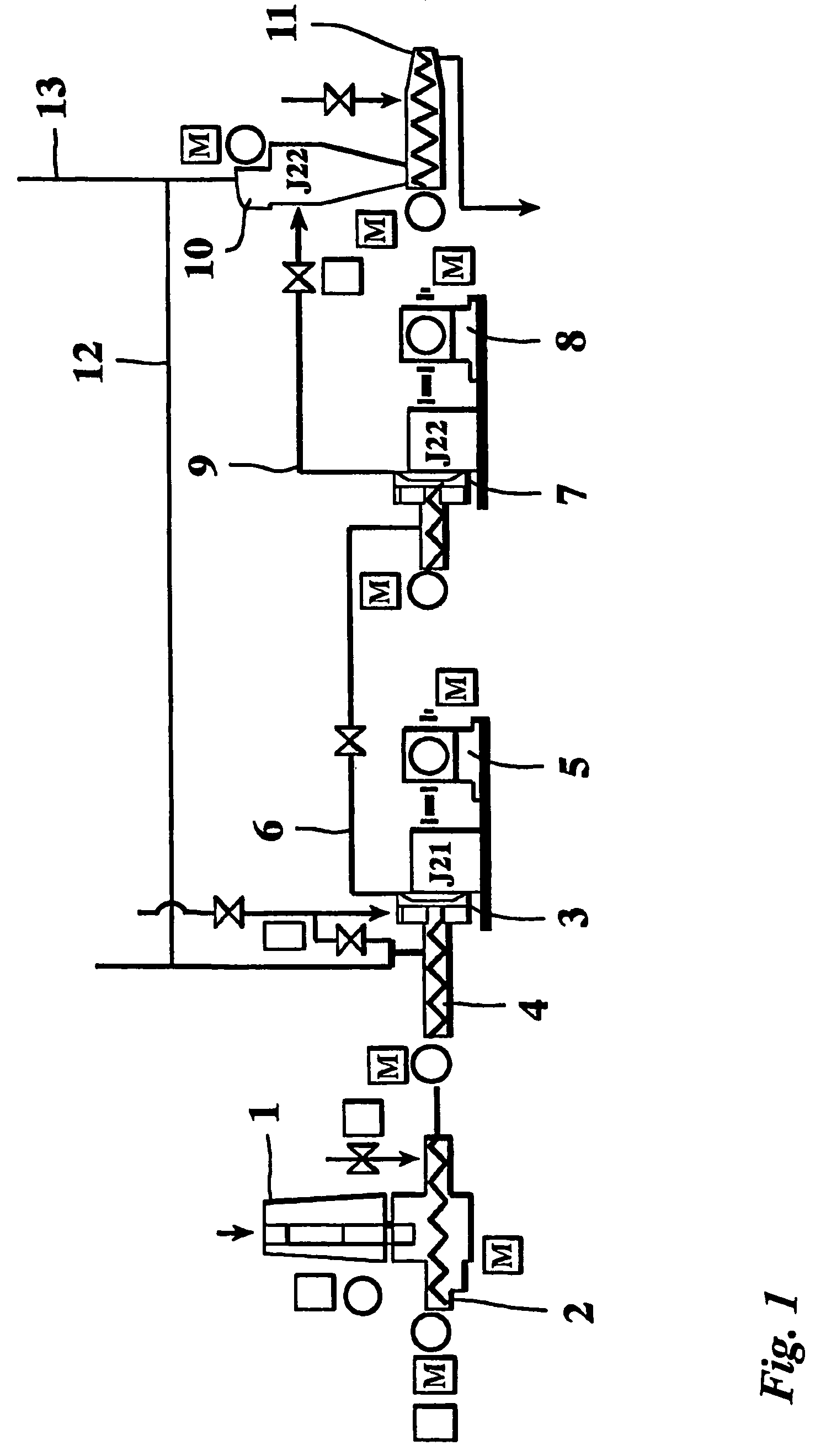Method and apparatus for producing mechanical fibers
a mechanical fiber and mechanical fiber technology, applied in the field of thermomechanical fiber production, can solve the problems of large energy consumption of internal friction in the fiber phase, large energy consumption of the fiber and the segment surface, and the length of the dwell time of the mass in the refiner, so as to improve the quality of the fiber, and improve the effect of suitableness
- Summary
- Abstract
- Description
- Claims
- Application Information
AI Technical Summary
Benefits of technology
Problems solved by technology
Method used
Image
Examples
Embodiment Construction
[0017]Objects and features of the invention will become apparent from the following detailed description considered in conjunction with the accompanying drawing. It is to be understood, however, that the drawings are intended solely for purposes of illustration and not as a definition of the limits of the invention, for which reference should be made to the appended claims.
[0018]The drawing shows main parts of a fiber producing line. The first apparatus in the line is a silo 1, into which prefabricated wood chips are fed. At the bottom of the silo 1 is a feeding screw 2 for removing the chips from the silo 1 feeding them further in the line. Next in line is a first refiner 3 into which chips are fed by a second feeding screw 4. The refiner 3 is driven by an electric motor 5 that rotates the rotor of the refiner. The rotor works against a stationery stator and chips that are refined travel in the gap of the stator and the rotor. The rotary force of the rotor pushes the mixture of chi...
PUM
| Property | Measurement | Unit |
|---|---|---|
| thermomechanical | aaaaa | aaaaa |
| mass | aaaaa | aaaaa |
| residence time | aaaaa | aaaaa |
Abstract
Description
Claims
Application Information
 Login to View More
Login to View More - R&D
- Intellectual Property
- Life Sciences
- Materials
- Tech Scout
- Unparalleled Data Quality
- Higher Quality Content
- 60% Fewer Hallucinations
Browse by: Latest US Patents, China's latest patents, Technical Efficacy Thesaurus, Application Domain, Technology Topic, Popular Technical Reports.
© 2025 PatSnap. All rights reserved.Legal|Privacy policy|Modern Slavery Act Transparency Statement|Sitemap|About US| Contact US: help@patsnap.com


